Welcome to Ishikawa, where a variety of birds await you! Ishikawa is home to a wide variety of birds, ranging from small songbirds to large seabirds. Every year, many tourists flock to Ishikawa to observe these beautiful creatures in their natural habitats.
As you explore Ishikawa, you will be able to witness a variety of birds in their natural habitats, including the Japanese Crested Ibis, the Grey Heron, the Steller’s Sea Eagle, and the Japanese Pygmy Woodpecker.
You can also enjoy the sights and sounds of common birds like sparrows, jays, and kingfishers. With so many different species of birds, it is guaranteed that you will experience something truly special in Ishikawa.
1. Green Pheasant
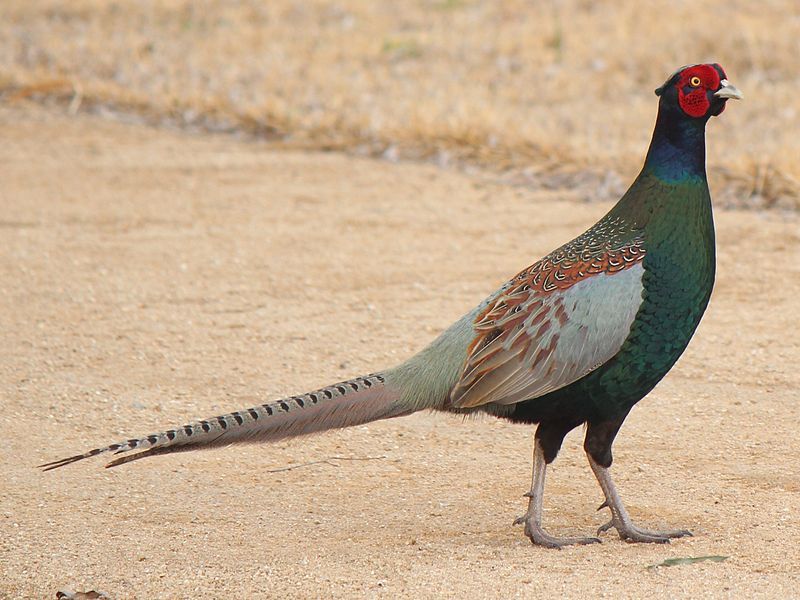
The green pheasant, also known as the Japanese green pheasant, is a species of bird that is native to the Japanese archipelago. It is an omnivore, meaning that its diet consists of both plant and animal matter.
The green pheasant is closely related to the common pheasant, with some taxonomic authorities considering it a subspecies of Phasianus colchicus. Due to its cultural and historical significance in Japan, the green pheasant has been named the national bird of the country.
Its bright green feathers and long tail make it a beautiful and recognizable species, and its presence is a reminder of the unique biodiversity found in Japan.
| Kingdom | Animalia |
| Phylum | Chordata |
| Class | Aves |
| Order | Galliformes |
| Family | Phasianidae |
| Genus | Phasianus |
| Species | P. versicolor |
2. Gray Heron
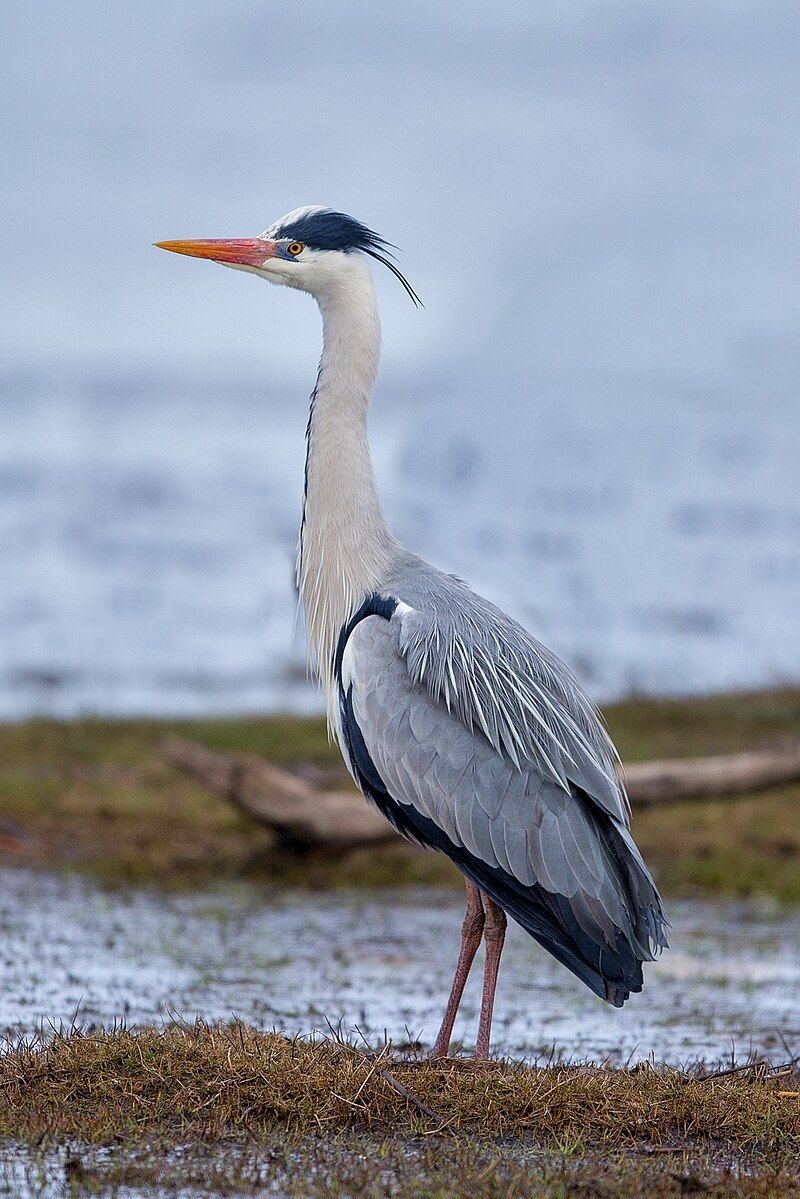
The grey heron is a large bird with long legs, belonging to the heron family, Ardeidae. It is widespread in temperate regions of Europe, Asia, and Africa.
In some areas, such as the northern parts of its range, it is a permanent resident, while in other areas it migrates south in the autumn. This migration is a well-known phenomenon, as the birds usually fly south when the weather starts to get colder.
The grey heron is an impressive sight, as it stands in the shallow waters, looking for small fish or amphibians to catch. It also uses its long beak to hunt insects and other small animals.
The grey heron is a majestic bird, and it is important to protect its habitat in order to ensure its survival.
| Kingdom | Animalia |
| Phylum | Chordata |
| Class | Aves |
| Order | Pelecaniformes |
| Family | Ardeidae |
| Genus | Ardea |
| Species | A. cinerea |
3. Eastern Spot-Billed Duck
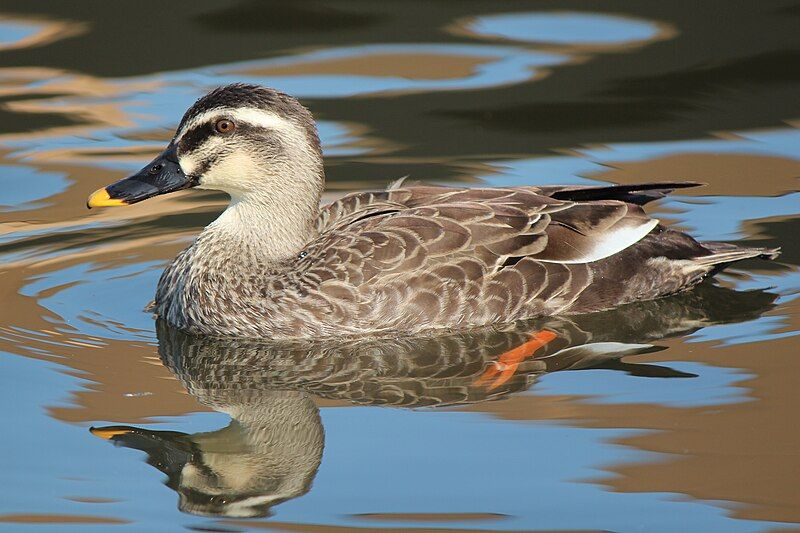
The eastern spot-billed duck, commonly referred to as the Chinese spot-billed duck, is a species of dabbling duck that is native to East and Southeast Asia.
This species was originally classified as a subspecies of the Indian spot-billed duck, and both were referred to by the same name – the spot-billed duck. This name is derived from the yellow spot that can be found on the bill of the duck.
The eastern spot-billed duck is a medium-sized duck, with a body length of around 50 cm. Its head and neck are light brown and its back and wings are dark brown.
It has a distinctive white patch on its cheeks and a white line running along its neck, which is visible when it is in flight. The bill is yellow with a black spot at the tip, which is where the species gets its name.
The eastern spot-billed duck is a gregarious species and is usually seen in small flocks. It has a variety of habitats, including freshwater marshes, ponds, rivers, and wet agricultural fields.
The species primarily feeds on aquatic plants, but also eats insects, larvae, and other small animals.
| Kingdom | Animalia |
| Phylum | Chordata |
| Class | Aves |
| Order | Anseriformes |
| Family | Anatidae |
| Genus | Anas |
| Species | A. zonorhyncha |
4. White-Bellied Green Pigeon
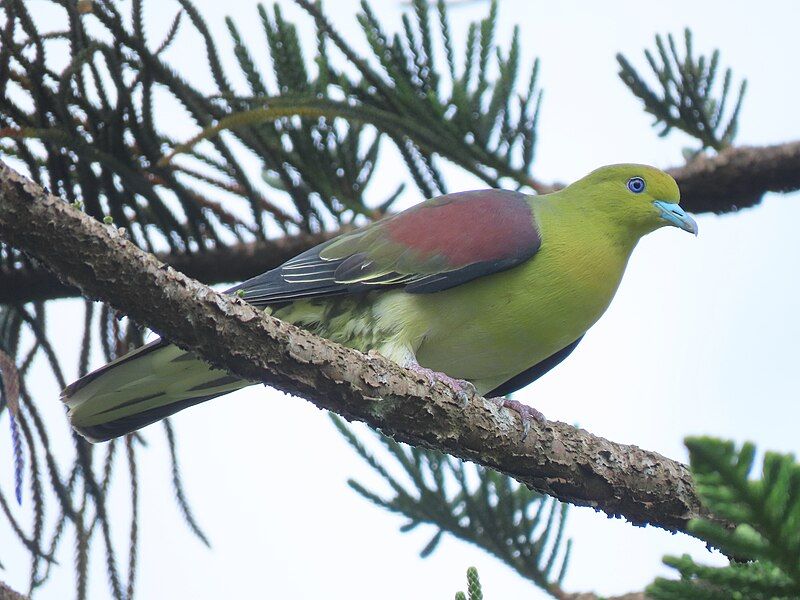
The white-bellied green pigeon is an interesting species of bird found in many countries in East Asia, such as China, Japan, South Korea, Laos, Russia, Taiwan, Thailand, India, and Vietnam.
It prefers inhabiting temperate forests, where it can find the resources needed for survival. One of the most unique behaviors of this species is its habit of drinking saltwater.
This behavior is rarely seen in other species of birds and is thought to be an adaptation that helps the pigeon to survive in its environment.
It is believed that saltwater helps to provide essential minerals and electrolytes that the bird cannot obtain from its regular diet. This behavior has earned the bird its name, as its white belly stands out against the green of its feathers.
The white-bellied green pigeon is an interesting species that shows remarkable adaptation to its environment.
| Kingdom | Animalia |
| Phylum | Chordata |
| Class | Aves |
| Order | Columbiformes |
| Family | Columbidae |
| Genus | Treron |
| Species | T. sieboldii |
5. White-Naped Crane
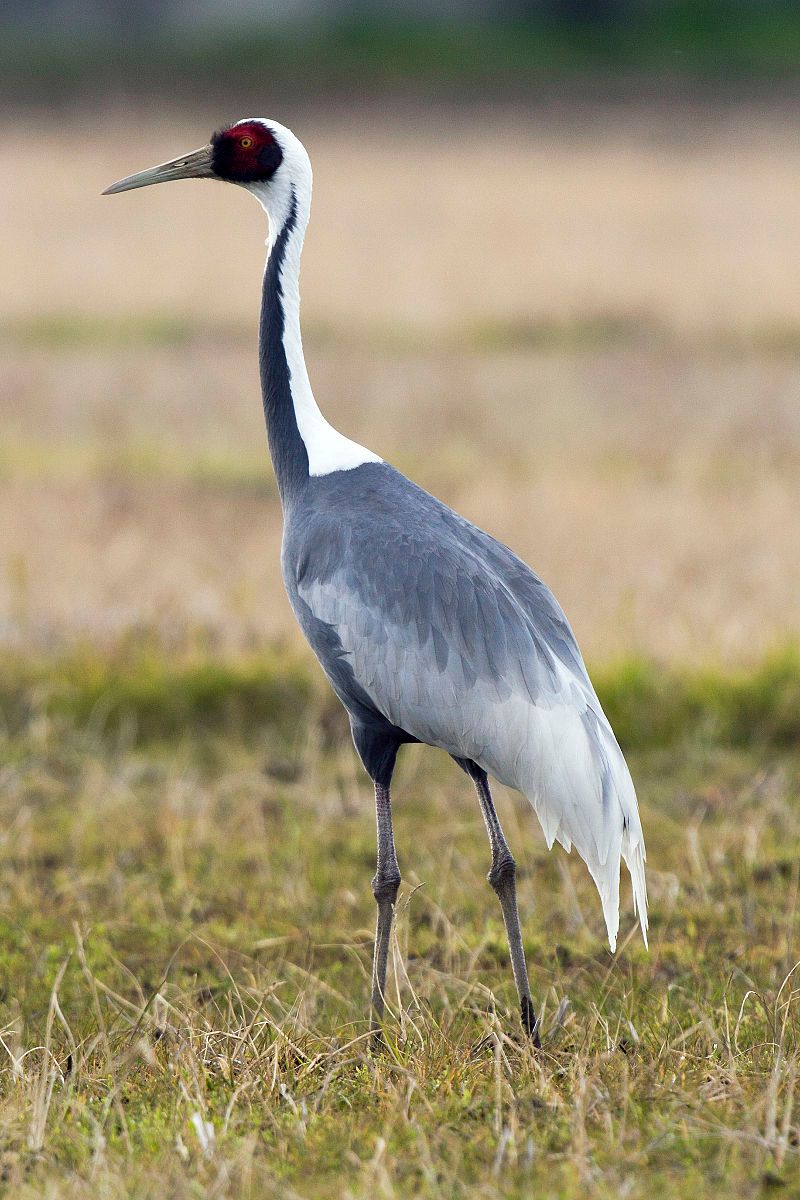
The white-naped crane is a species of crane belonging to the Gruidae family. It is a large bird, measuring 112-125 cm in length and 130 cm in height. It has a relatively light weight of approximately 5.6 kg.
The bird has pinkish legs, a grey-and-white striped neck, and a red face patch, which makes it easy to distinguish from other crane species. The diet of a white-naped crane consists mainly of plants, insects, and small amphibians.
These birds inhabit wetland areas, and their diet can vary depending on where they live. While some are found in open grasslands, others are found in marshlands and wetlands. They have also been known to feed on crops in agricultural areas.
White-naped cranes are found mainly in East Asia, in countries such as Russia, China, and Japan. They are migratory birds and travel long distances between summer and winter habitats.
These birds have been known to fly as far as 4,000 kilometers in order to reach their winter habitats in places like Japan and South Korea.
White-naped cranes have a vulnerable conservation status, due to threats posed by human activities such as habitat loss, pollution, and illegal hunting. As a result, these birds are now considered endangered and protected in many countries.
Conservation efforts are being made to help protect the white-naped crane and its habitats.
| Kingdom | Animalia |
| Phylum | Chordata |
| Class | Aves |
| Order | Gruiformes |
| Family | Gruidae |
| Genus | Antigone |
| Species | A. vipio |
6. Long-Billed Plover
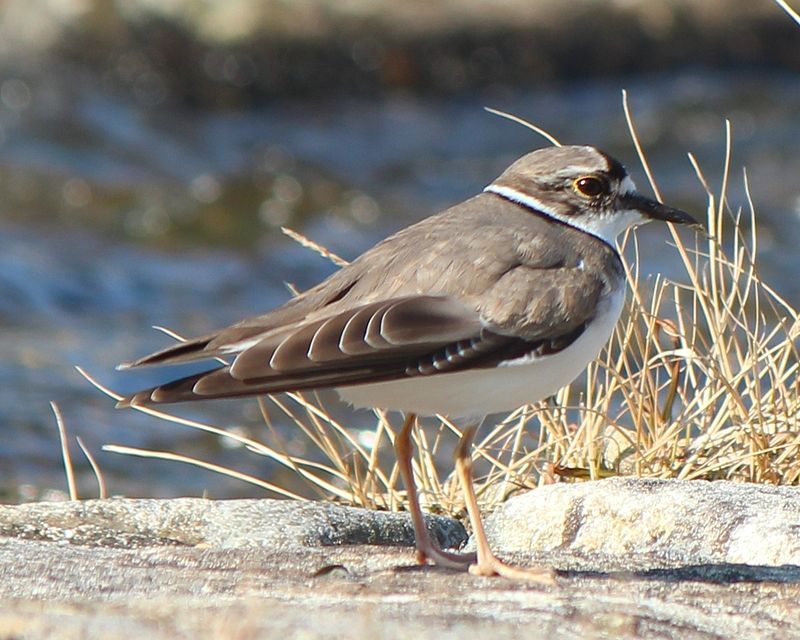
The Long-billed Plover is a species of wading bird that is part of the family Charadriidae.
This species of bird can be found in many places across Asia, including Bangladesh, Bhutan, Brunei, Cambodia, China, Hong Kong, India, Indonesia, Japan, Laos, Malaysia, Mongolia, Myanmar, Nepal, North Korea, Russia, South Korea, Sri Lanka, Taiwan, Thailand, and Vietnam. This species of bird prefers to live in wetland habitats, such as marshes, ponds, and lakes.
It also tends to stick to coastal areas and can sometimes even be found in agricultural fields. These birds feed on invertebrates, such as mollusks, worms, and insects.
They are also known to eat small fish, crustaceans, and even some plant matter. The Long-billed Plover is a medium-sized bird, reaching lengths of up to 10 inches. Its body is mostly brown in color, with white or pale yellow feathers on its head and neck.
It has a long, pointed bill, which is used to probe in shallow water for food. The Long-billed Plover is a social bird, often seen in small groups on the shore. This species of bird is considered to be of least concern by the International Union for Conservation of Nature (IUCN).
It is a relatively common species, although its population is declining in some areas due to habitat destruction and overhunting.
The Long-billed Plover is protected under the Convention on Migratory Species (CMS) and the Agreement on the Conservation of African-Eurasian Migratory Waterbirds (AEWA).
| Kingdom | Animalia |
| Phylum | Chordata |
| Class | Aves |
| Order | Charadriiformes |
| Family | Charadriidae |
| Genus | Charadrius |
| Species | C. placidus |
7. Hooded Crane
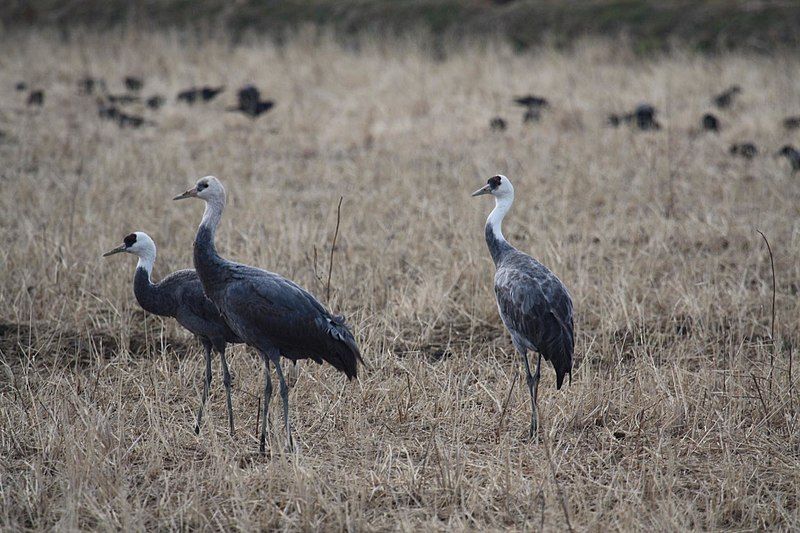
The hooded crane is a migratory bird species native to East Asia. It is a medium-sized crane, with a wingspan ranging between 135-155 cm. The species is highly migratory and can be found in Japan during the spring and autumn months.
The hooded crane’s plumage is white with a grey mantle and black wings. Its head is mainly grey and has a red patch on its crown. The hooded crane is an omnivorous species, feeding on aquatic plants, small invertebrates, and berries.
During the winter months, they feed on grains, insects, small mammals, and tadpoles. They build their nests on the ground or in shallow water and usually lay 2-4 eggs.
Hooded cranes are considered a vulnerable species due to their small population size and their vulnerability to habitat destruction. They are also threatened by hunting, disturbance, and egg collection.
Conservation efforts have been made in order to help protect this species, including habitat protection and captive breeding programs.
| Kingdom | Animalia |
| Phylum | Chordata |
| Class | Aves |
| Order | Gruiformes |
| Family | Gruidae |
| Genus | Grus |
| Species | G. monacha |
8. Great Egret
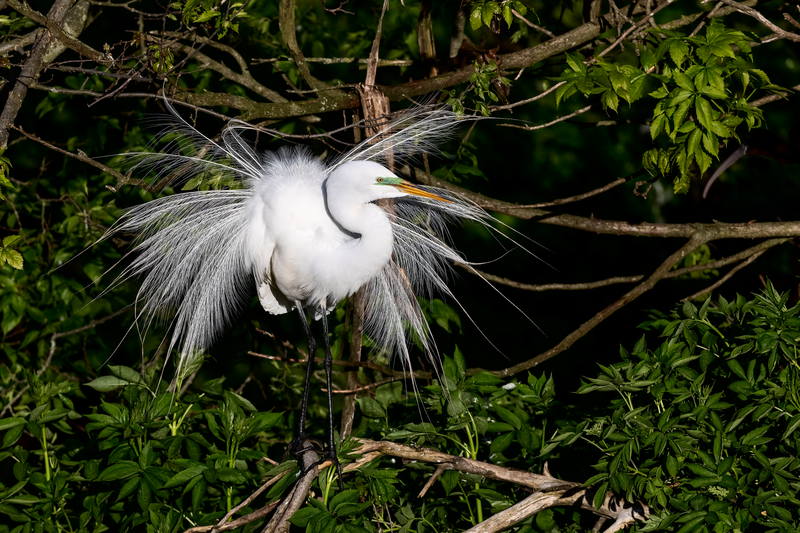
The great egret is a large, widely distributed species of egret that has four subspecies. It is commonly known as the common egret, large egret, or great white egret or great white heron.
These subspecies are found in various regions around the world, such as Asia, Africa, the Americas, and southern Europe.
Recently, the great egret has been making its way to more northern areas of Europe, suggesting a possible expansion of its range. This species of egret has a long neck and long legs, and its feathers are mostly white, though they may be tinged with a yellow or grey hue.
The great egret has a unique diet, which consists of fish, frogs, snakes, insects, and small mammals. It can usually be seen wading in shallow water, searching for food.
The great egret is an important species for many ecosystems, as it helps to keep fish and insect populations in check. The great egret is a species of conservation concern, as its population has been declining in many areas.
This is due to loss of habitat, pollution, and even hunting. Fortunately, there have been efforts to protect this species, and its numbers have been increasing in some areas.
The great egret is an important species, and with proper protection, it can continue to thrive in its habitats.
| Kingdom | Animalia |
| Phylum | Chordata |
| Class | Aves |
| Order | Pelecaniformes |
| Family | Ardeidae |
| Genus | Ardea |
| Species | A. alba |
9. Little Egret
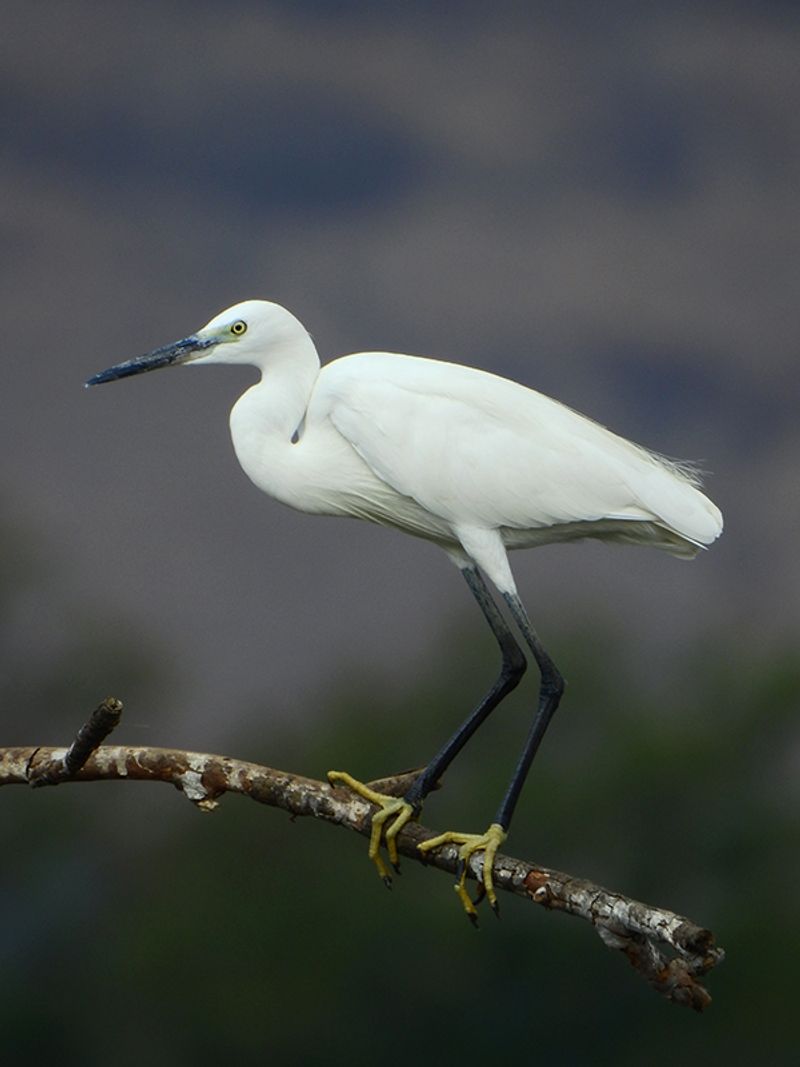
The little egret is a beautiful and elegant species of small heron that belongs to the family Ardeidae. It has a slender, black beak and long, black legs. The western race of this bird is known to have yellow feet.
This bird is quite aquatic, as it enjoys feeding in shallow water and on land. It is quite omnivorous, consuming a variety of small creatures such as insects, fish, reptiles, crustaceans, and amphibians. Its diet is quite varied, making it an interesting bird to observe.
It is also known to be quite social, often seen in small flocks. Its white plumage makes it stand out against its natural habitat, making it quite easy to spot. All in all, the little egret is a fascinating species that is sure to captivate any bird-watcher.
| Kingdom | Animalia |
| Phylum | Chordata |
| Class | Aves |
| Order | Pelecaniformes |
| Family | Ardeidae |
| Genus | Egretta |
| Species | E. garzetta |
10. Streaked Shearwater
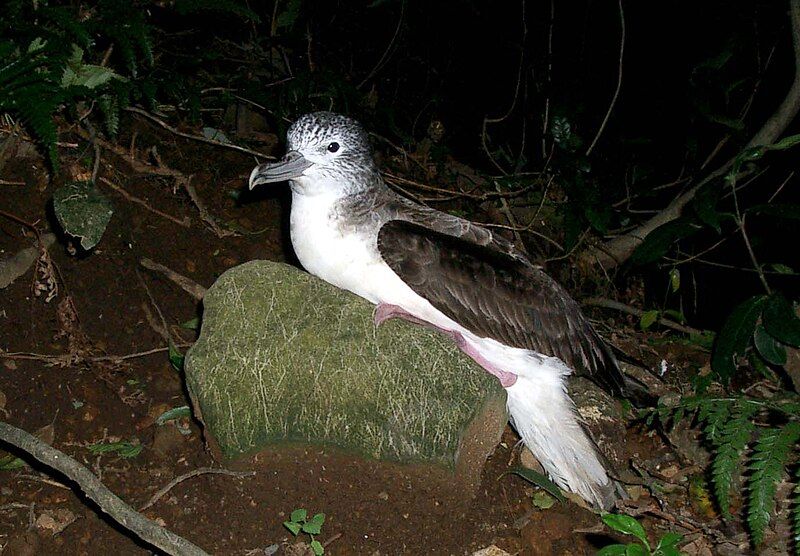
The streaked shearwater is a species of seabird found in the coastal waters of the northern Pacific Ocean. It is a medium-sized bird, with an average length of 48 cm and a wingspan of 122 cm.
The bird has a bill which is long and slightly hooked, and its wings are long and pointed. Its plumage is predominantly grayish-brown with darker streaking, and it has white underparts. The streaked shearwater is an adept flyer, capable of long-distance migrations.
It is a highly sociable species, often found in large flocks. Its diet consists mainly of small fish and squid, which it catches by diving into the ocean from a height.
The streaked shearwater is an important part of the marine environment, and it plays an important role in the food chain by helping to maintain healthy fish populations.
| Kingdom | Animalia |
| Phylum | Chordata |
| Class | Aves |
| Order | Procellariiformes |
| Family | Procellariidae |
| Genus | Calonectris |
| Species | C. leucomelas |
11. Black Kite
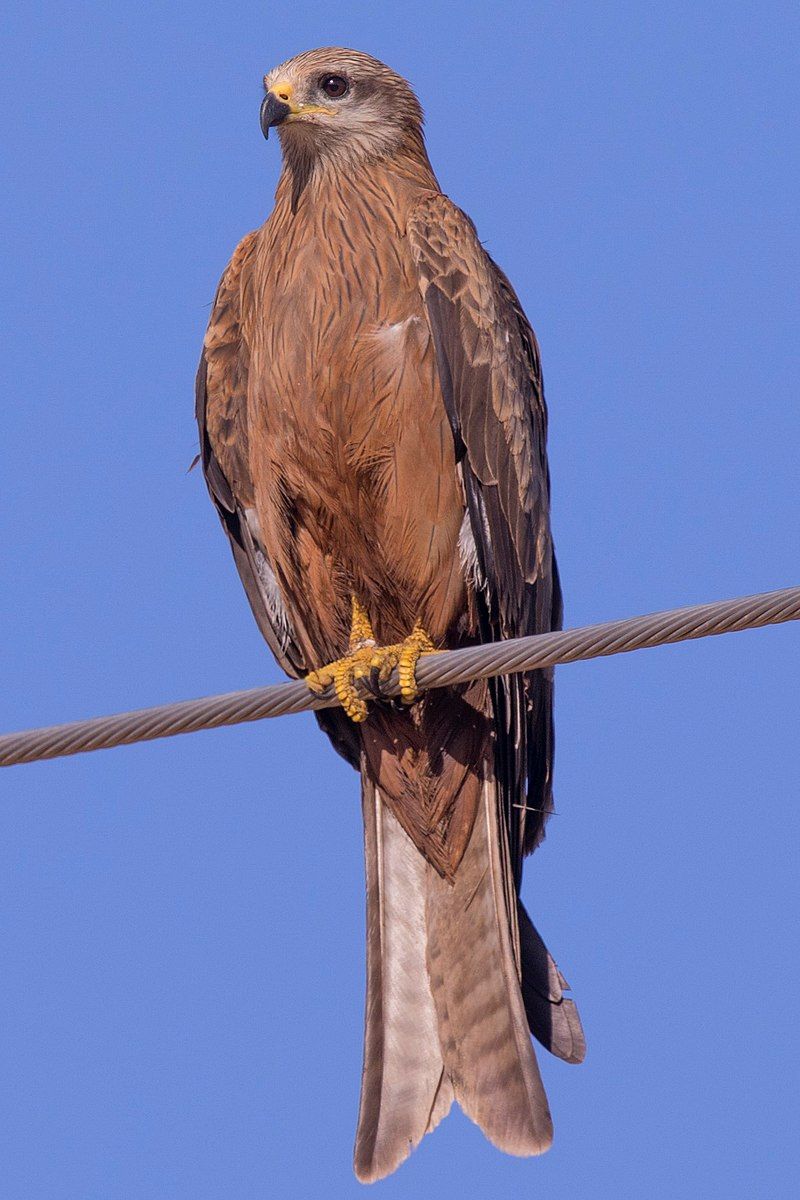
The black kite is a bird of prey that belongs to the family Accipitridae. This family includes many types of diurnal raptors, such as hawks, eagles, and vultures. It is thought to be the most abundant species of Accipitridae in the world.
However, some of its populations have experienced significant declines or fluctuations in numbers due to human activities such as hunting and habitat destruction. It has a medium-sized body with long wings and a forked tail, which helps it to maneuver in the air.
It usually feeds on carrion, insects, and small mammals. It is also known to scavenge food from human settlements. Conservation efforts are underway to help protect this species and its dwindling numbers.
| Kingdom | Animalia |
| Phylum | Chordata |
| Class | Aves |
| Order | Accipitriformes |
| Family | Accipitridae |
| Genus | Milvus |
| Species | M. migrans |
12. Northern Hawk-Cuckoo
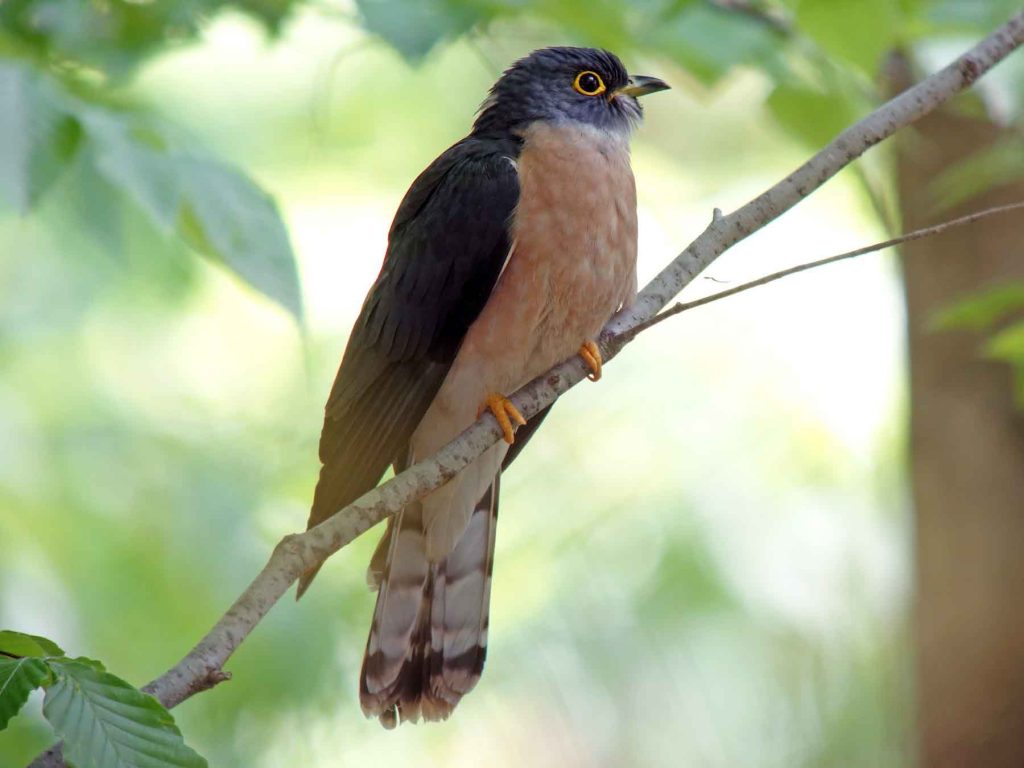
Source: ebird.org
The northern hawk-cuckoo is a medium-sized bird native to parts of East Asia. It belongs to the family Cuculidae, which includes other cuckoos and is closely related to Hodgson’s hawk-cuckoo.
This species is primarily found in eastern China, North and South Korea, far eastern Russia, and Japan. During winter, some northern populations of the species migrate to Borneo.
The northern hawk-cuckoo is easily recognizable by its reddish-brown plumage, which gives it its alternate name, the rufous hawk-cuckoo. It is a relatively large cuckoo, measuring about 35 cm in length. Its upperparts are gray with black spots, while its underparts are white.
Its tail is rounded and barred with yellow and black. This species feeds on insects, larvae, and other invertebrates. It typically hunts from a perch, making short foraging flights to capture its prey.
It nests in trees, building an open cup-shaped nest out of twigs and other materials. It is a solitary nester, and the female is responsible for incubating the eggs and caring for the young.
The northern hawk-cuckoo is vulnerable to human disturbance and destruction of its habitat, and its population is in decline. Conservation efforts are needed to ensure the survival of this species.
| Kingdom | Animalia |
| Phylum | Chordata |
| Class | Aves |
| Order | Cuculiformes |
| Family | Cuculidae |
| Genus | Hierococcyx |
| Species | H. hyperythrus |
13. Little-Ringed Plover
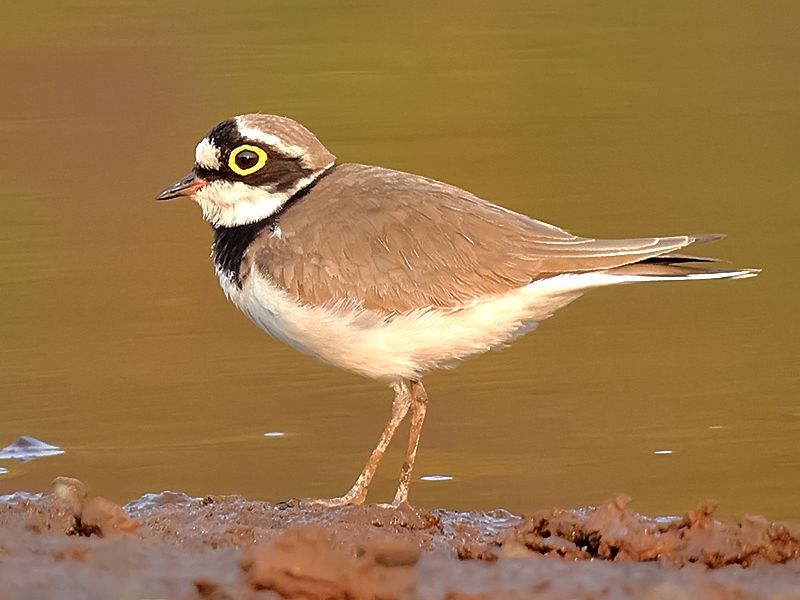
The little ringed plover is a species of small plover, a type of shorebird. It belongs to the genus Charadrius, a scientific name derived from Late Latin and the fourth-century Vulgate.
The name Charadrius is derived from the Ancient Greek word kharadrios, which is used to refer to a type of bird found in river valleys.
This species of bird is typically found in coastal areas, with sandy or muddy beaches, and is known for its distinctive black rings around its eyes. It is a migratory species and can be found in many parts of the world, including Europe, Africa, Asia, and North America.
The little ringed plover has a wide range of habitats, from mudflats to salt marshes, and is also known to inhabit agricultural land and wet meadows. It feeds on small invertebrates, such as insects, crustaceans, and worms, as well as seeds, grains, and other plant matter.
The little ringed plover is an important species as it helps to maintain the health of the environment by providing a food source for other animals.
| Kingdom | Animalia |
| Phylum | Chordata |
| Class | Aves |
| Order | Charadriiformes |
| Family | Charadriidae |
| Genus | Charadrius |
| Species | C. dubius |
14. Great Crested Grebe
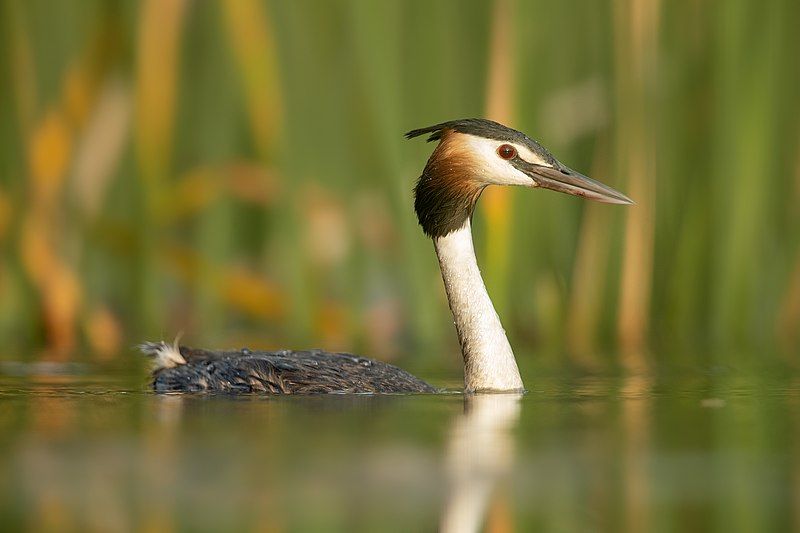
The great crested grebe is a large water bird that is part of the grebe family. It is native to Europe, Asia, and parts of Africa, and is easily identifiable due to its distinct black and white plumage.
The Grebe is best known for its elaborate mating display, which consists of a series of courtship behaviors. The male will perform a series of elaborate courtship postures, including shaking his head and displaying his feathers, in order to attract a mate.
The female will then join the male in a courtship dance, during which they will swim in circles around each other. The two birds will then create a floating nest by bringing vegetation from the shore and arranging it in the water.
After the nest is completed, the pair will mate and will typically remain together for the duration of the breeding season. This elaborate courtship display is a unique and highly entertaining behavior, making the great crested grebe a fascinating bird to observe.
| Kingdom | Animalia |
| Phylum | Chordata |
| Class | Aves |
| Order | Podicipediformes |
| Family | Podicipedidae |
| Genus | Podiceps |
| Species | P. cristatus |
15. Black-Headed Gull
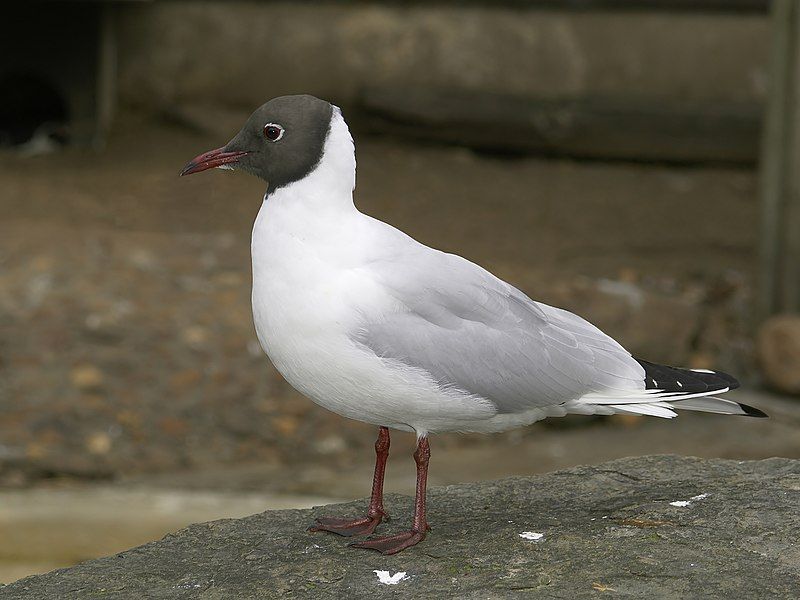
The black-headed gull is a species of small gull that is found in many parts of the Palearctic region, which includes Europe, as well as coastal eastern Canada.
The majority of this species migrates south during the winter months, but some remain in the more temperate areas of western Europe all year round. These birds are primarily found along the coastlines and are identified by their black heads and grey wings.
They feed on a variety of items such as insects, fish, and small crustaceans, foraging both on land and in the water. They often congregate in large flocks, and can often be seen in areas that are rich in food.
The black-headed gull is a species of conservation concern, and populations are monitored to ensure their continued survival.
| Kingdom | Animalia |
| Phylum | Chordata |
| Class | Aves |
| Order | Charadriiformes |
| Family | Laridae |
| Genus | Chroicocephalus |
| Species | C. ridibundus |
16. Black-Tailed Gull
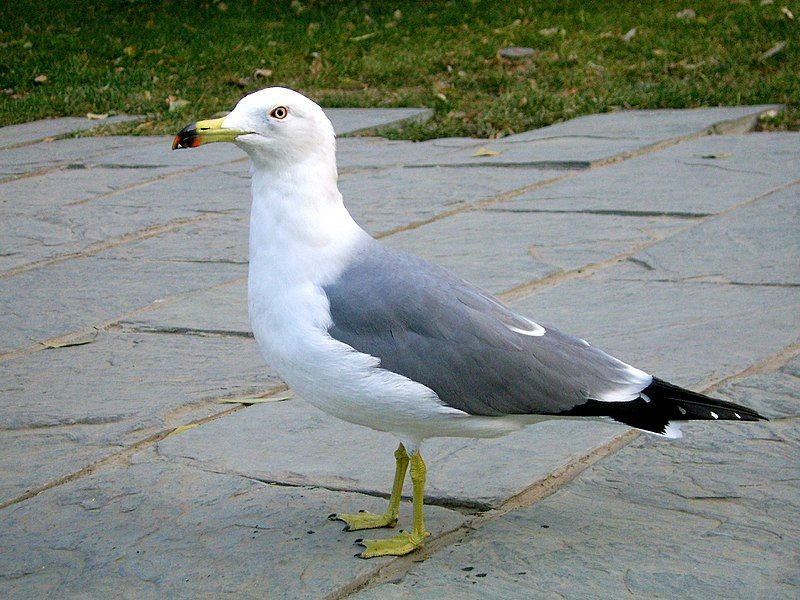
The black-tailed gull is a species of gull native to the shorelines of East Asia. It is a medium-sized seabird with a grey-brown body, white head and neck, and black tail. Its wings are greyish-black and its bill is yellow.
It has a characteristic call, which is a loud, ringing “Kree-ah”. It inhabits a wide range of habitats including rocky and sandy beaches, estuaries, rivers, and ports. It feeds mainly on small fish, molluscs, crustaceans, and insects.
It can be found in China, Russia, Japan, North and South Korea, and Taiwan. The black-tailed gull is a common sight along the coasts of East Asia and is an important part of the region’s coastal ecosystems.
It is a keystone species, meaning its presence and activities have a large impact on the overall health of the habitat. The black-tailed gull is also an important source of food for humans, providing a sustainable and important source of food for coastal communities.
| Kingdom | Animalia |
| Phylum | Chordata |
| Class | Aves |
| Order | Charadriiformes |
| Family | Laridae |
| Genus | Larus |
| Species | L. crassirostris |
17. Red-Necked Stint
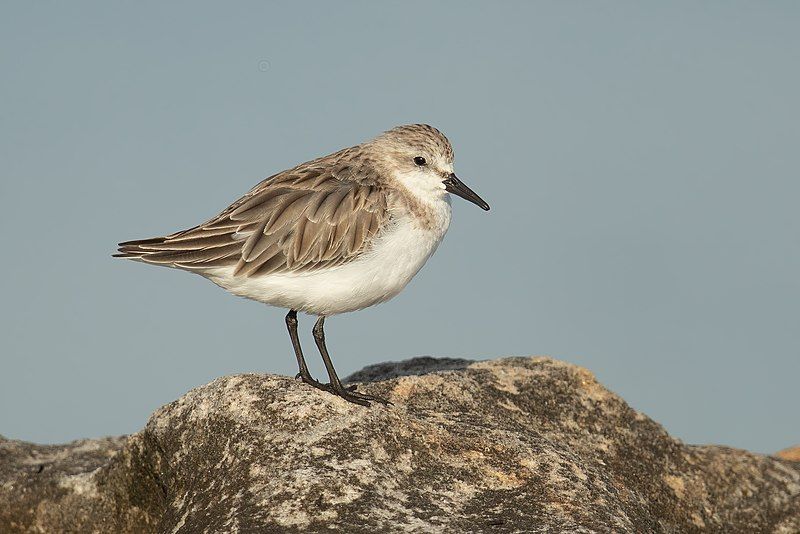
The Red-necked Stint is a small migratory wader belonging to the genus Calidris. This genus of birds is derived from Ancient Greek, with the terms ‘kalidris’ and ‘skalidris’, which were both used by Aristotle to describe grey-coloured waterside birds.
The specific name of the Red-necked Stint, ruficollis, also comes from Latin, with ‘rufus’ meaning red and ‘collum’ meaning neck. This combination of words therefore perfectly describes the bird’s main physical characteristic – its red neck.
The Red-necked Stint is a migratory species, traveling across many parts of the world in order to find suitable breeding grounds. It is a small wader but it is an important part of the global ecosystem, contributing to the balance of the environment.
| Kingdom | Animalia |
| Phylum | Chordata |
| Class | Aves |
| Order | Charadriiformes |
| Family | Scolopacidae |
| Genus | Calidris |
| Species | C. ruficollis |
18. Black-Winged Stilt
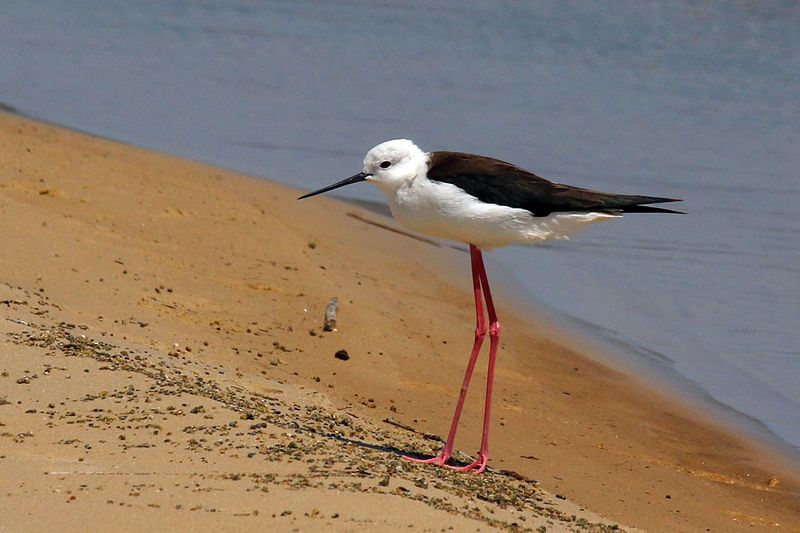
The black-winged stilt is a species of long-legged wader bird that is found in many parts of the world. It is a member of the avocet and stilt family and is sometimes known by its scientific name, H. himantopus.
It is a unique species with a wide range of habitats, from tropical to temperate regions. It is a wading bird that often lives near shallow water bodies, such as lakes, marshes, and wetlands, where it feeds on small fish, insects, and crustaceans.
The black-winged stilt is a striking bird, with its long legs, black wings, and white body. Its most distinctive feature is its long beak, which is curved downward in a characteristic fashion.
The black-winged stilt is a social bird, often found in flocks and pairs, and its vocalizations are quite loud and distinctive. It is a beautiful sight to see a flock of black-winged stilts soaring in the sky, their long legs and wings beating the air in unison.
The black-winged stilt is an important species in many parts of the world, and its conservation is important for the preservation of its habitats and the animals that inhabit them.
| Kingdom | Animalia |
| Phylum | Chordata |
| Class | Aves |
| Order | Charadriiformes |
| Family | Recurvirostridae |
| Genus | Himantopus |
| Species | H. himantopus |
19. Grey-Tailed Tattler
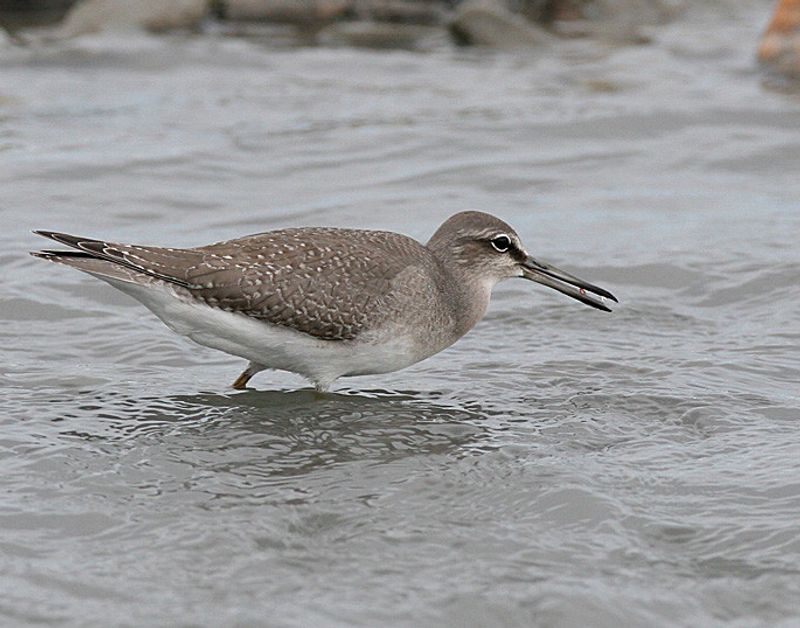
The grey-tailed tattler is a small shorebird of the genus Tringa, found in the northern parts of Siberia and the Polynesian Islands. It is also known by several other names such as the Siberian tattler or Polynesian tattler.
The English name for these birds refers to their loud and distinctive call, which is usually made in the form of a series of loud “tattle” sounds.
The call of the grey-tailed tattler is so loud that it can be heard from a considerable distance away. The grey-tailed tattler has a greyish-brown back and upper wings, with white underwings and a white belly. Its head is grey and its neck is streaked with black.
It has a long, pointed bill, which it uses to forage for food in the shallow waters of the shoreline. Its diet consists of small crustaceans, worms, and insects. This shorebird is an important part of the local ecology, as it helps to maintain the balance of the local food chain.
It is also an important part of the birdwatching community, as its distinctive call and behavior make it an easy bird to recognize.
| Kingdom | Animalia |
| Phylum | Chordata |
| Class | Aves |
| Order | Charadriiformes |
| Family | Scolopacidae |
| Genus | Tringa |
| Species | T. brevipes |
20. Great Spotted Woodpecker
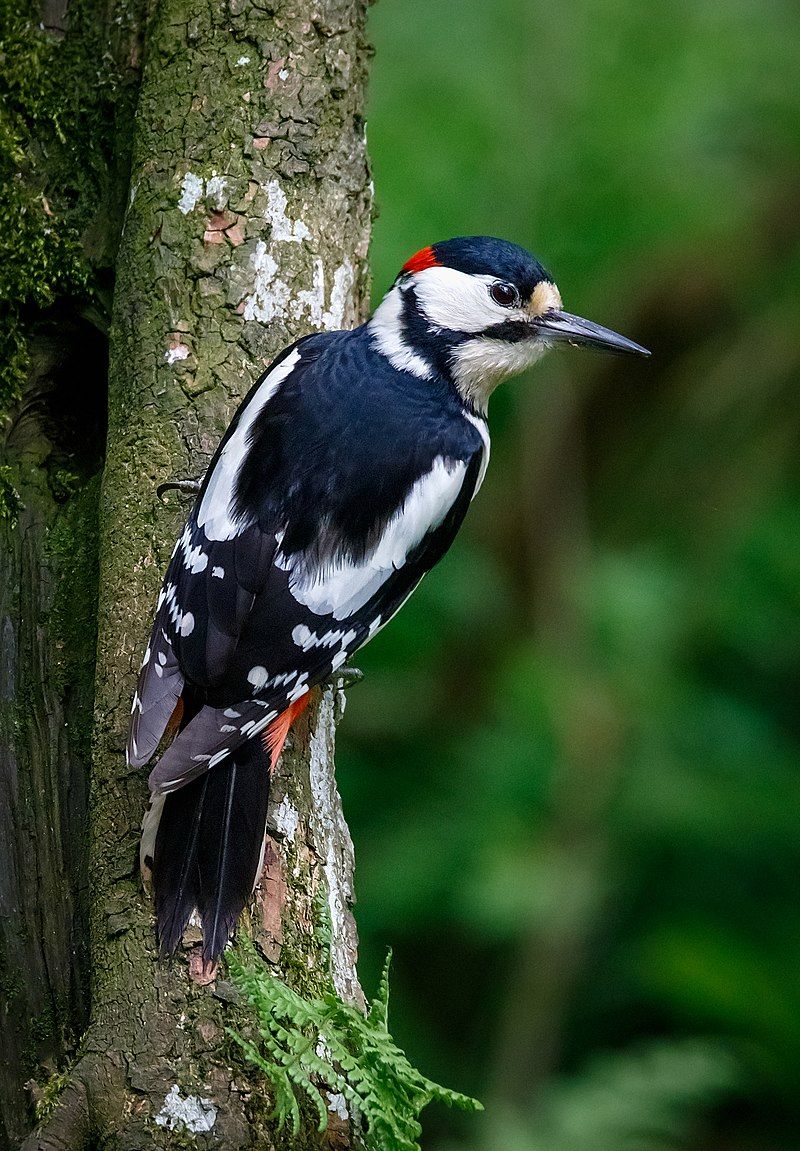
The great spotted woodpecker is a medium-sized bird characterized by its black and white plumage, with a red patch on the lower belly. Males and young birds also have red markings on either their necks or heads, making them easily distinguishable from other birds.
This species is widely distributed across the Palearctic region, including parts of North Africa. It is a solitary bird, living in forests, parks and gardens. It mainly feeds on insects and larvae, which it finds by hammering on the bark of trees.
It is also known for its loud call, which can be heard during the day. This species is a common sight in many countries and is a popular bird among birdwatchers and nature enthusiasts.
| Kingdom | Animalia |
| Phylum | Chordata |
| Class | Aves |
| Order | Piciformes |
| Family | Picidae |
| Genus | Dendrocopos |
| Species | D. major |
21. Varied Tit
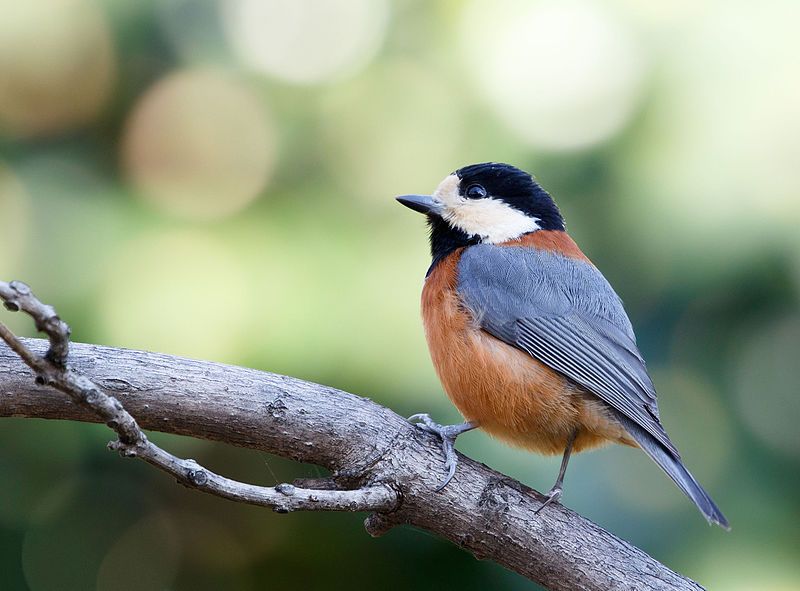
The varied tit is a small bird that belongs to the tit family, Paridae. It is native to the eastern Palearctic region, which includes Japan, Korea, and parts of China and Russia.
It is known for its wide range of colors, with its feathers ranging from a pale yellow to a deep blue-gray. The varied tit is a perching bird, meaning it spends much of its time perched atop trees and other branches.
It feeds on insects, seeds, and berries, and lives in a variety of habitats, including forests, grasslands, and urban areas. It is a social bird, often found in flocks.
The varied tit is considered a species of least concern by the International Union for Conservation of Nature, as it has a wide range and is not threatened by human activities.
| Kingdom | Animalia |
| Phylum | Chordata |
| Class | Aves |
| Order | Passeriformes |
| Family | Paridae |
| Genus | Sittiparus |
| Species | S. varius |
Conclusion
The birds of Ishikawa are an integral part of the natural environment of the region. They provide ecological services such as pollination, seed dispersal, and pest control, and they contribute to the beauty of the landscape.
With the increasing development in the area, it is important to protect the bird populations of Ishikawa, so that future generations can continue to enjoy their presence.